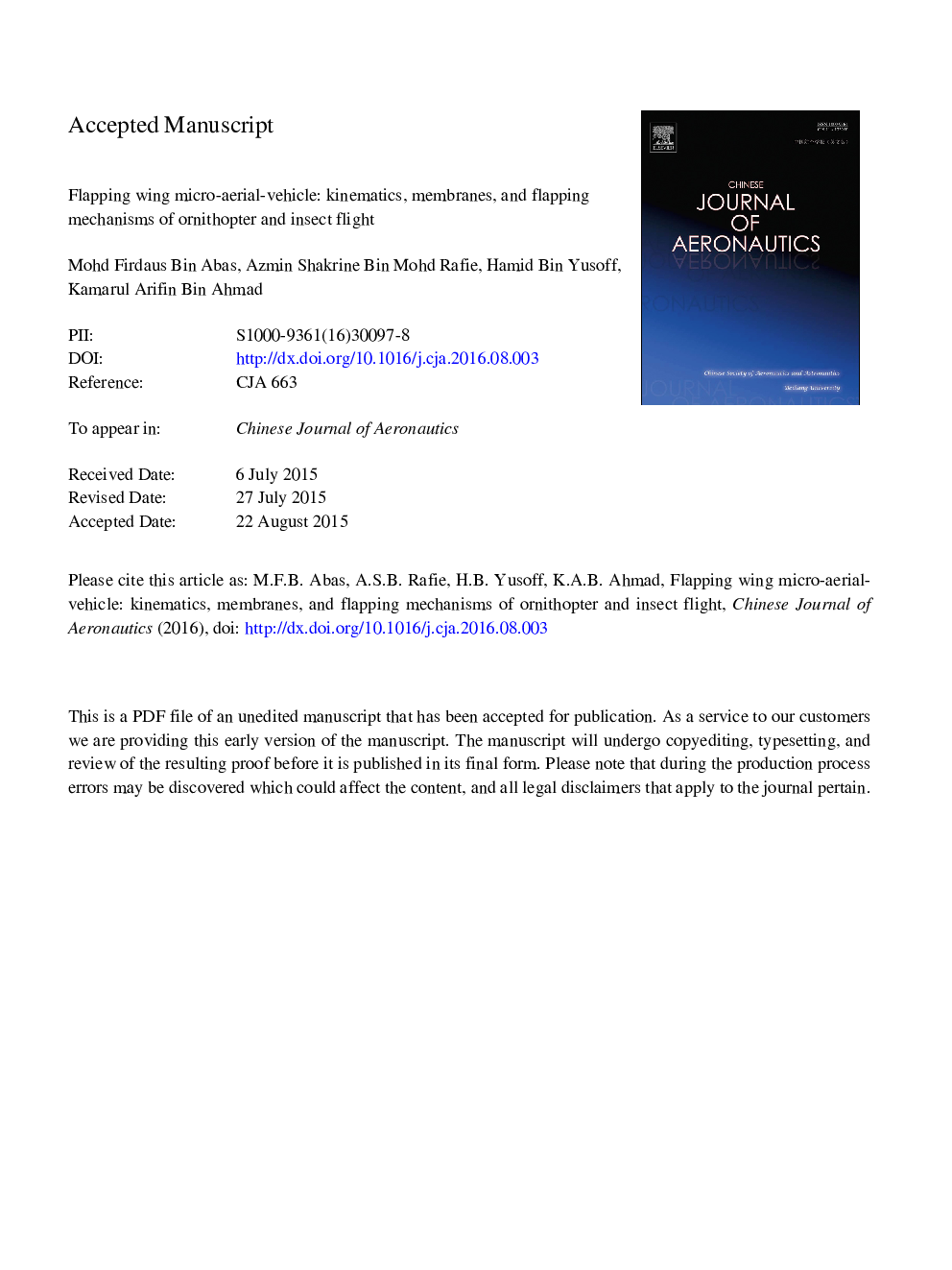| Article ID | Journal | Published Year | Pages | File Type |
|---|---|---|---|---|
| 7154314 | Chinese Journal of Aeronautics | 2016 | 24 Pages |
Abstract
The application of biomimetics in the development of unmanned-aerial-vehicles (UAV) has advanced to an exceptionally small scale of nano-aerial-vehicles (NAV), which has surpassed its immediate predecessor of micro-aerial-vehicles (MAV), leaving a vast range of development possibilities that MAVs have to offer. Because of the prompt advancement into the NAV research development, the true potential and challenges presented by MAV development were never solved, understood, and truly uncovered, especially under the influence of transition and low Reynolds number flow characteristics. This paper reviews a part of previous MAV research developments which are deemed important of notification; kinematics, membranes, and flapping mechanisms ranges from small birds to big insects, which resides within the transition and low Reynolds number regimes. This paper also reviews the possibility of applying a piezoelectric transmission used to produce NAV flapping wing motion and mounted on a MAV, replacing the conventional motorized flapping wing transmission. Findings suggest that limited work has been done for MAVs matching these criteria. The preferred research approach has seen bias towards numerical analysis as compared to experimental analysis.
Keywords
Related Topics
Physical Sciences and Engineering
Engineering
Aerospace Engineering
Authors
Mohd Firdaus Bin Abas, Azmin Shakrine Bin Mohd Rafie, Hamid Bin Yusoff, Kamarul Arifin Bin Ahmad,
